German Christmas from the eyes of an American expat
It’s been quite the adventure living and working in Northern Germany as an American. Navigating my way across the cultural threshold between the German and the American way has been a lot more demanding, and rewarding, than I had ever thought.
Despite the excitement of my new holiday traditions, Christmastime can be an especially difficult time when living abroad. The inevitable homesickness makes this magical time of year truly bittersweet.
However, if there’s one thing I’ve learned from my time here is that there really isn’t anything like Christmas in Germany.
So, I put together a few of my new favorite Christmas traditions along with some interesting facts about Christmas in Germany that I hope you enjoy!
The Christmas Tree (der Weihnachsbaum)

Did you know that the Christmas tree tradition was brought to the U.S. by German immigrants? Actually, many of the Christmas traditions celebrated in the U.S. originally began in Germany.
Historically, German tribes decorated their houses with evergreen branches for the Yule season. Eventually, after the conversion into Christianity, this custom evolved into families bringing the entire tree inside their homes. A tradition that remains strong to this day.
And thus began my new yearly tradition of going to the local Weihnachtsbaumplantage (Yeah, check out that word!)–Christmas tree farm.
I love roaming the aisles of the towering evergreens, scouring for the perfect tree. And afterwards, huddling around high top tables eating a hot Christmas sausage and drinking the kids versions of Gluwein, mulled wine. Which in my case is a blend of juices and spices.
The Modern Christmas Tree
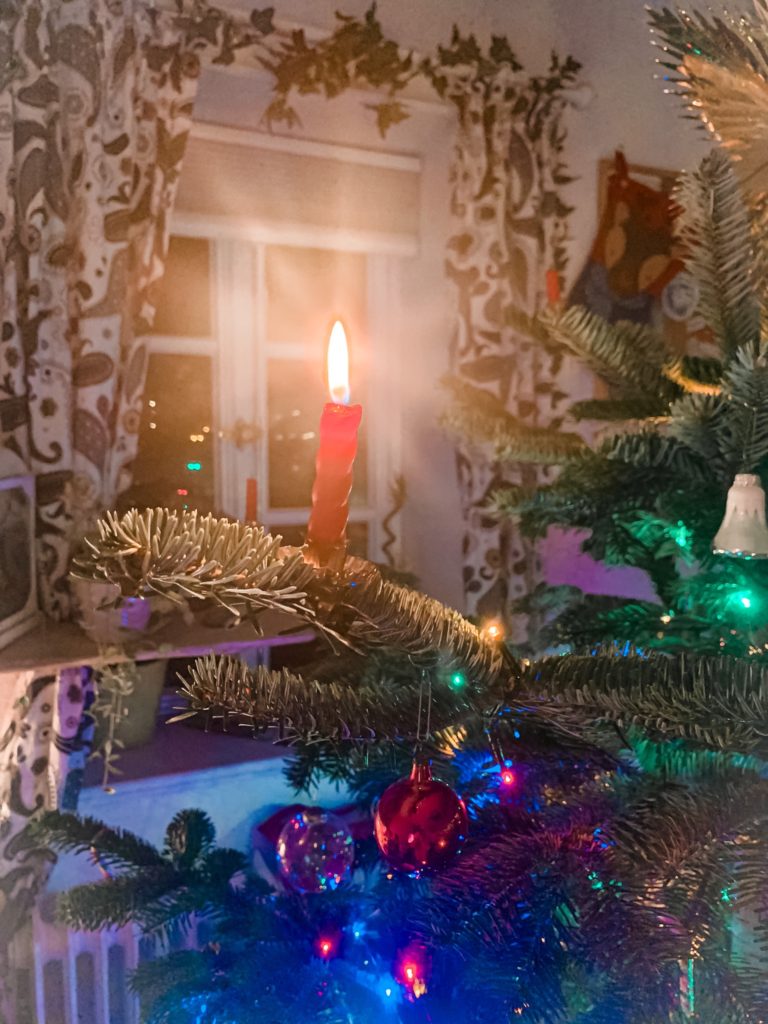
Unlike the U.S, where Christmas trees usually go up around the end of November, it’s not unusual for the Christmas tree to be put up a few days before or even on Christmas Eve.
One difference I have especially noticed in Germany is how the Christmas tree is decorated. Garland, tinsel, and flashy ribbons are gone and in its place is a more simple and classic motif.
In fact, some families still light their trees using traditional candles, a custom dating back over 400 years.
I’m the classic go big or go home kinda girl. So, when my husband gently advised me that maybe we should not put all of the ornaments on the tree. Well, let’s just say I was slightly taken aback.
However, I am glad to say that after three years, we have found a (somewhat) happy middle ground when it comes to decorating our tree.
Advent
One of my favorite childhood memories is running across the room to get my chocolate-filled Advent calendar, opening the window and seeing what surprise that lay behind its cardboard doors. This was the extent of my Advent knowledge. Until I moved to Northern Germany where the Advent season is more celebrated.
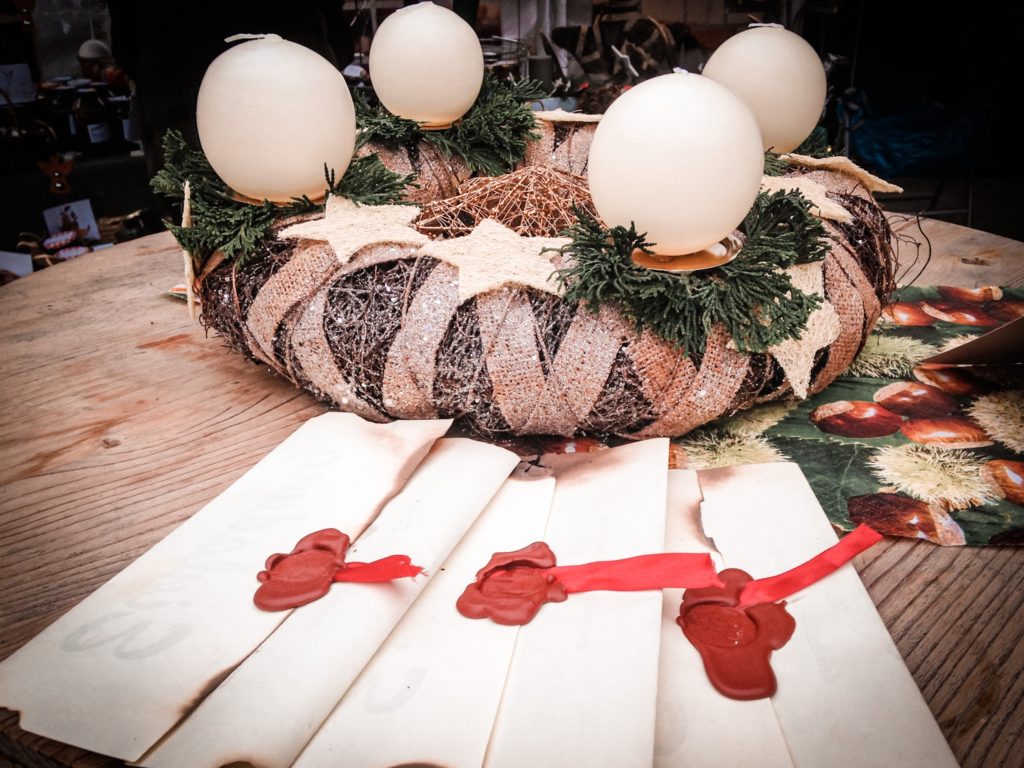
The Advent Wreath
Many families set an Advent wreath on display either in the living room or on a window sill. The wreath is usually decorated with evergreen branches, berries, and pine cones.
On each Sunday before Christmas, you light one candle until all four candles are lit by the final Sunday before Christmas. A reflective time amongst the dimmed light, families spend this time either playing music, watching a movie, or drinking and eating traditional Christmas treats.
In the small village that I live, families take turn hosting a gathering on their designated Advent Sunday night and invite their neighbors for food, carols, and sometimes a reading of a classic Christmas story. It’s beautiful way to build the anticipation for Christmas Day.
St. Nicholas Day (Sankt Nikolaus Tag)
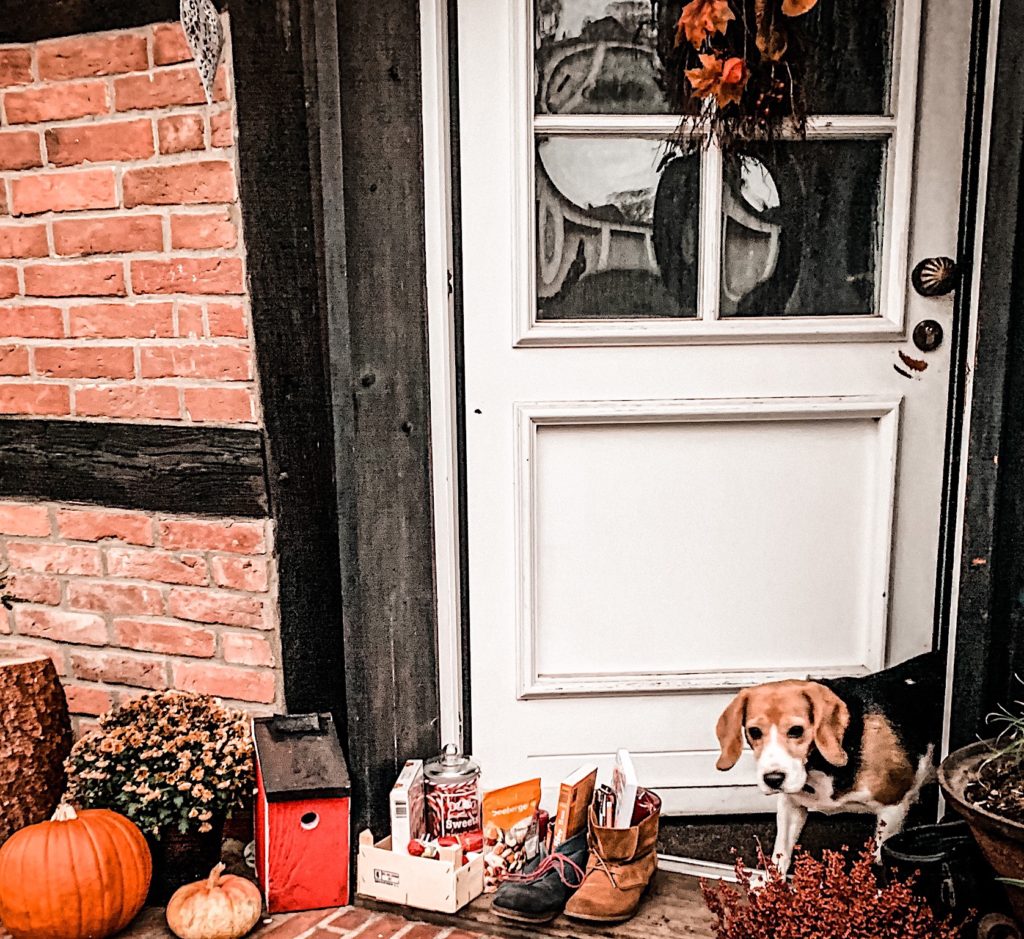
December 5th is a very anticipated night for children in Germany.
Children set out their freshly cleaned boots on their front porches in hopes that St. Nicholas will come!
But you better have been good year round. If not, instead of the traditional chocolates, nuts, tangerines, or small little toy, you just might get a lump of coal instead.
Krampus Night (Krampus Nacht)
In Southern Bavaria, St. Nicholas’ Night is celebrated quite the opposite. Locals in demonic costumes, wear demonic masks and go from house to house — but this isn’t St. Nikolous, but rather, Krampus. They bang on doors causing all sorts of ruckus. And if they are invited in by they try to scare children into good behavior.
Sometimes an unsuspecting teenage boy may be dragged outside by his hands and feet, and dunked into the snow as his younger siblings watch with glee. Afterwards, Krampus might end the night at a local pub reveling in the mischief that he caused.
Christmas Markets (Weihnachtsmärkte)
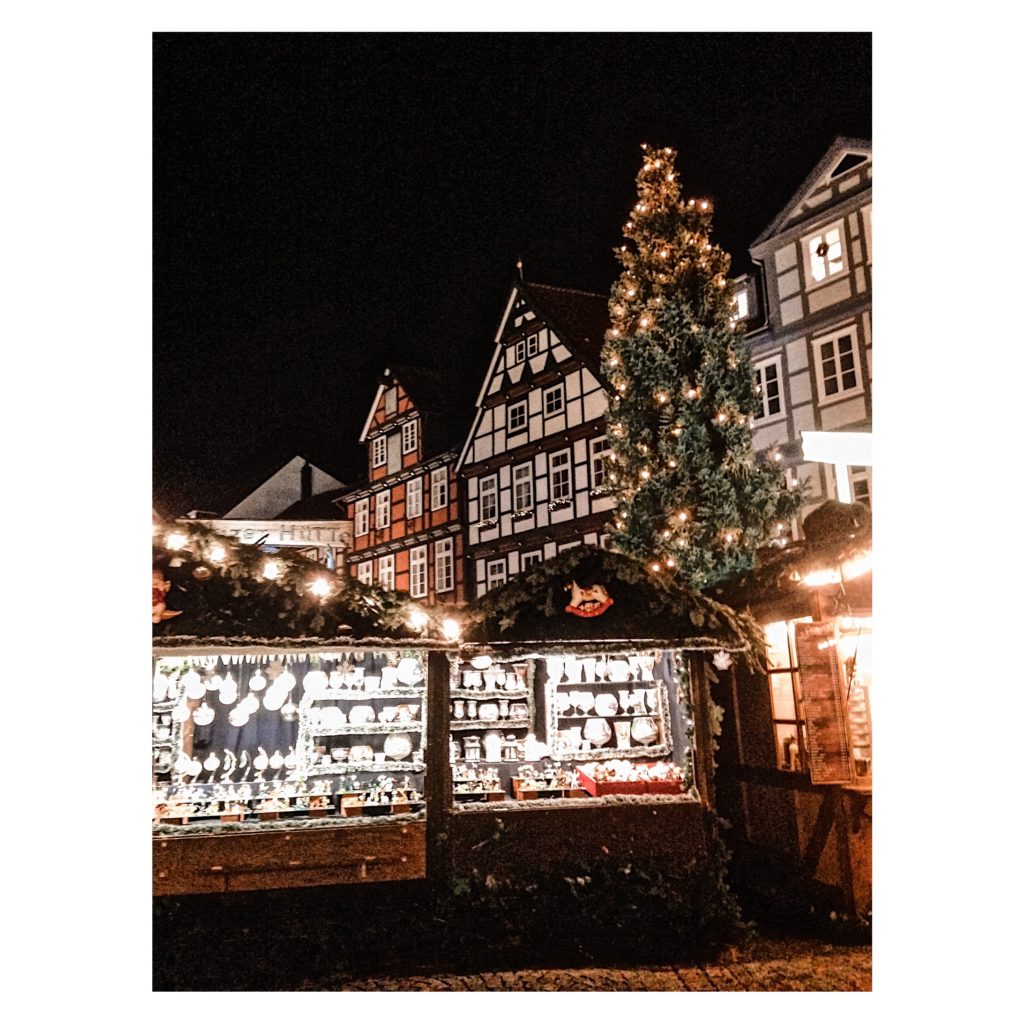
During Advent season your will undoubtedly experience the glorious scents of a Christmas market. The smell of mulled wine, evergreen trees, and sugar glazed nuts fill the air as you wander down the aisles searching for the perfect gift.
Twinkling holiday lights and glittering decorations adorn the historic center of every major German city adding a special kind of Christmas magic. In fact, even the small villages have their own market where vendors can display local arts and crafts.
Oh, and the food! Grilled sausage, fried fish, and of course, you can’t forget about dessert. There is vendor after vendor offering roasted sugar-coated nuts, cookies, pastries, and my favorite, schmalzgeback, fried dough tossed in powdered sugar
Traditional Christmas Foods
I will never forget my first Christmas Eve, where the family gathered together at Grandma’s, and a meal of sausage and potatoes salad was laid out before me.
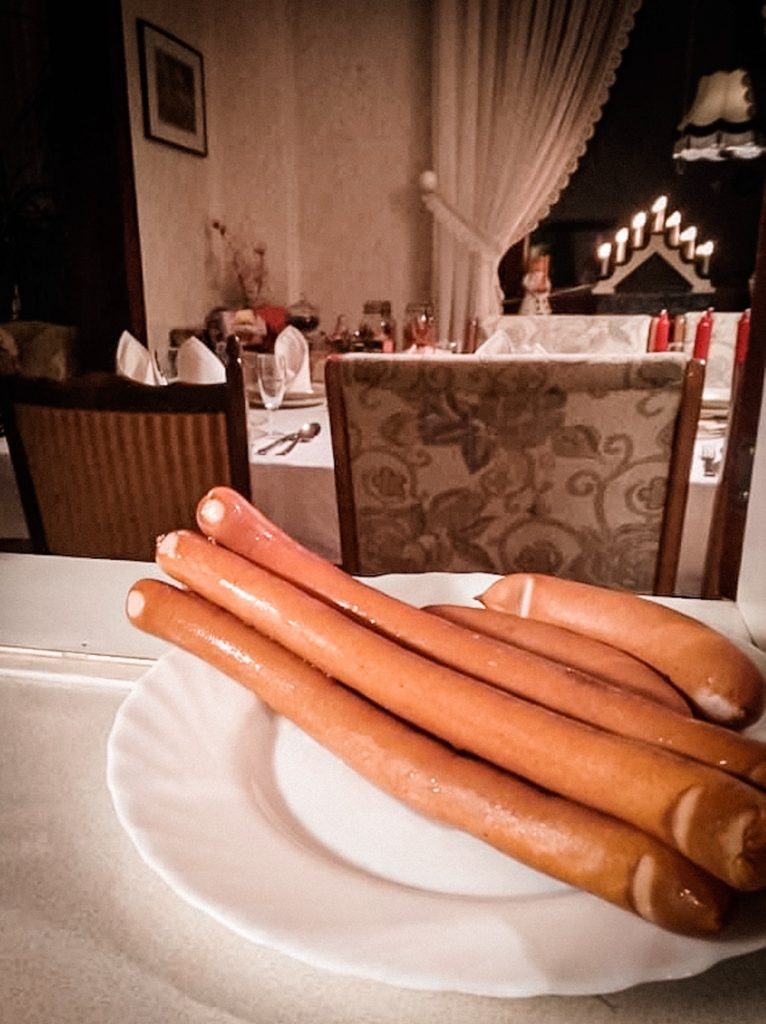
I remember smiling tightly thinking to myself, “Hotdogs?? Are we really about to eat hotdogs for Christmas?!”
Don’t get me wrong, the meal was delicious– you really have tried sausage until you’ve tried Germany’s unlimited variety of smoked meats.
Nonetheless, I now know it is more customary to have the big Christmas dinner on the 25th. This usually consists of a main dish of either duck, goose, rabbit or a roast. And is usually accompanied by German delicacies like, apple and sausage stuffing, red cabbage and potato dumplings.
And the Nontraditional
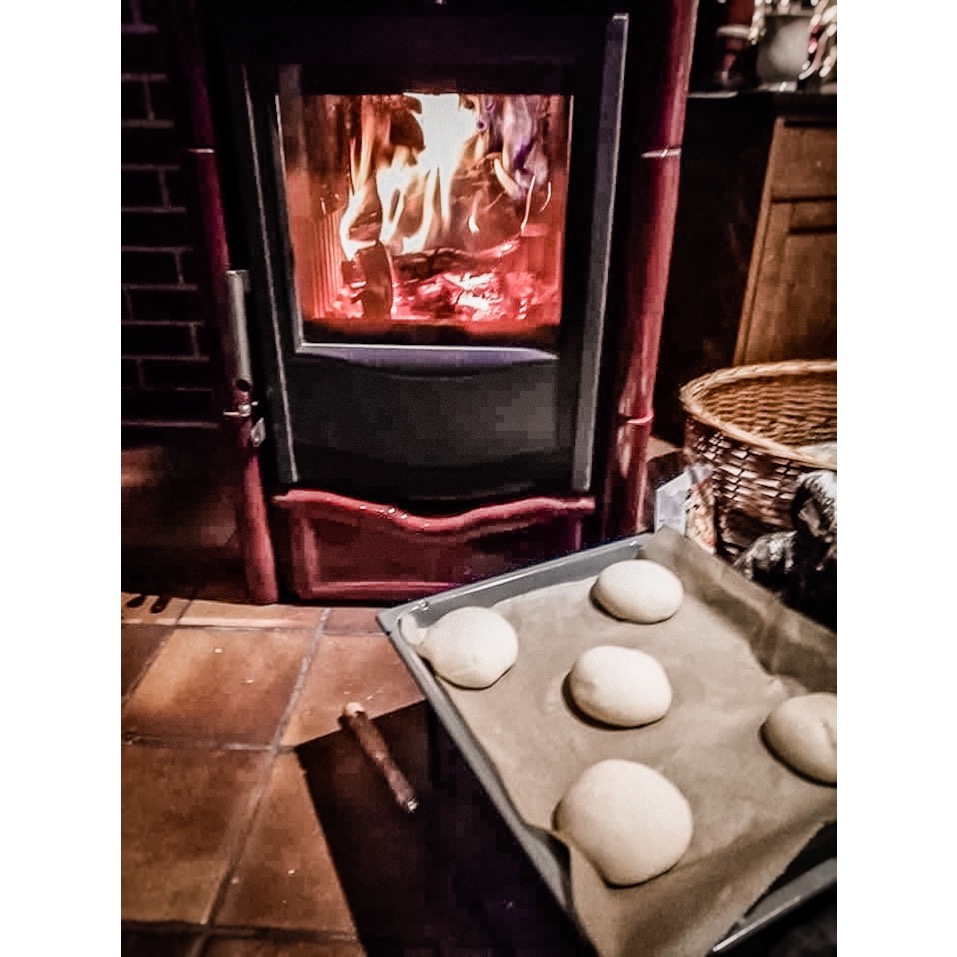
However, my family makes homemade burgers hand ground beef to homemade buns—which obviously to say is very unusual. But I absolutely love it. AND, unlike in the U.S., there is not just one Christmas Day in Germany, but two.
That’s right you heard me. The 25th and 26th are observed national holidays, so the 26th is the day where our entire family gathers together and we eat a more traditional Christmas dinner.
And finally for dessert you might have a Christmas Stollen. This tasty bread bursts with nuts and fruit and is nothing like what you may think of when you hear “fruitcake.”
A Very Happy Holiday Season
I hope you enjoyed this tiny peek into my new life abroad, and perhaps experienced a little bit of the magic behind Christmas in Germany.
I wish you all a very happy and healthy holiday season, and a wonderful New Year! What are some of your holiday traditions? Feel free to share them in the comment box below.

I got what you intend,bookmarked, very decent website.
Thanks a lot- I appreciate it
I am incessantly thought about this, thanks for posting.
I reckon something truly special in this website.
Some really great info, Gladiola I detected this. I’m not spaming. I’m just saying your website is AWSOME! Thank you so much! Please vist also my website.
Really nice design and good subject material. Please also check my website. I love cars!
Thanks for the feedback! That’s so nice of you 🙂
I reckon something truly special in this website. That’s why I visited it again. I really love your website!
Thank you so much! I’m glad you love it 🙂